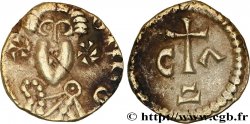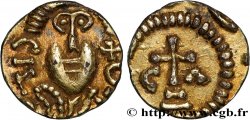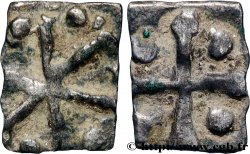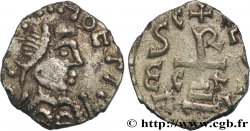bmv_287539 - CHALON-SUR-SAÔNE (CABILONNUM) - Saône-et-Loire Denier à la croix
Not available.
Item sold on our e-shop (2013)
Price : 480.00 €
Item sold on our e-shop (2013)
Price : 480.00 €
Type : Denier à la croix
Date: VIIIe siècle
Mint name / Town : 71 - Chalon-sur-Saône
Metal : silver
Diameter : 11 mm
Weight : 1,03 g.
Rarity : R2
Coments on the condition:
Beau petit denier sur un flan un peu court et épais, avec une frappe centrée. Agréable patine de collection ancienne, avec une concrétion vert de gris au revers
Catalogue references :
Obverse
Obverse legend : LÉGENDE INDÉTERMINÉE.
Obverse description : Croix à six branches dans un grènetis ; légende autour.
Reverse
Reverse legend : CA-BIL-ON-NO.
Reverse description : Croix cantonnée d’un globule dans chaque canton ; légende en quatre parties.
Commentary
L’épigraphie de ce denier est intéressante, avec une légende dégénérée. La légende CA-BIL-ON-NO semble aussi avoir été ré-interprétée au revers, avec des lettres manquantes.
Malheureusement, il semble difficile de restituer le nom du monétaire à partir de la légende du droit.
Malheureusement, il semble difficile de restituer le nom du monétaire à partir de la légende du droit.







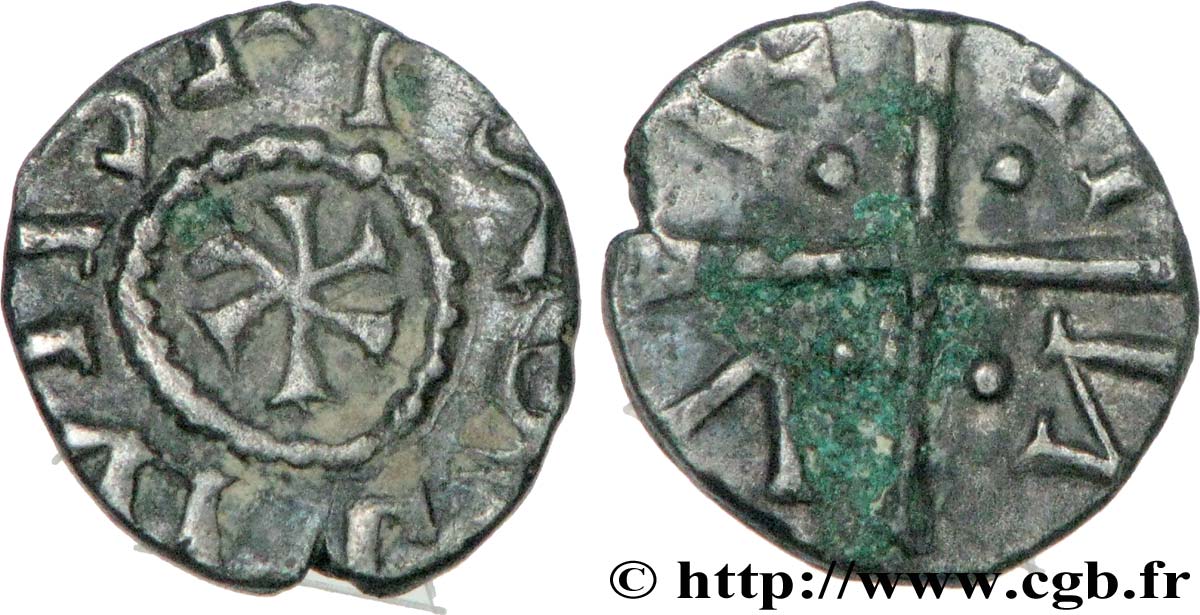
 Report a mistake
Report a mistake Print the page
Print the page Share my selection
Share my selection Ask a question
Ask a question Consign / sell
Consign / sell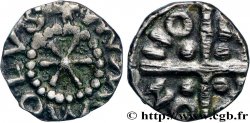
 Full data
Full data